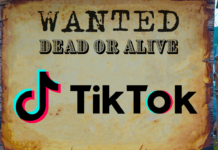Microsoft is expected to offer Skype in a unified communications package that has been integrated with Lync and offered to businesses. The company has begun describing Lync as its inside-the-firewall communications offering, while Skype is for outside the firewall. Skype for Windows 8 was recently released, rebuilt from the ground up for the new OS.
Goodbye, Windows Live Messenger. You will now be retired, and the next generation — aka Skype — will take your place.
That’s the word from Microsoft, which announced Tuesday that Messenger’s 12-year lifespan is coming to an end by the first quarter for all markets except mainland China, where Messenger will continue to be available.
The company is encouraging the estimated 100 million-plus users of Messenger to transition to Skype. Although still possessing a considerable user base, Messenger has been rapidly losing users, which numbered about 300 million about three years ago.
‘About the People’
On the Windows blog, Brian Hall, general manager of the company’s Windows Live unit, wrote Tuesday that “many of us use and love Messenger today — but it’s always been about the people that make up Messenger — not the app itself.”
Several weeks ago, Microsoft released version 6.0 of Skype, which allowed users to sign into the service via a Microsoft account, such as the one used for Outlook. Users can also sign in with their Messenger ID, and their Messenger contact list will be available as the transition takes place.
Microsoft notes that Skype offers greater support for all platforms, including iPad and Android Relevant Products/Services tablets, and has the ability to call landlines and mobiles, a functionality for sharing Relevant Products/Services screens, video calling with Facebook friends, and group video calling.
p>Skype allows users to make free or inexpensive calls around the world, over the Internet. It has become a popular means for personal communications between companies, and many businesses, especially smaller ones, regularly use some form of the service.
A ‘Re-Imagined Skype’
Messenger’s revenue had primarily been from ads, but Skype also provides a range of services that are available for a fee, beyond the free Skype-to-Skype calls. In June, Microsoft announced new, targeted Conversation Ads for users of the free Skype service, as a way to “spark additional topics of conversation.” The new ads were seen as another potential revenue stream, as well as a way to encourage users of the free service to sign up for the premium, ad-free version.
Microsoft is expected to offer Skype in a unified communications package that has been integrated with Lync and offered to businesses. The company has begun describing Lync as its inside-the-firewall communications offering, while Skype is for outside the firewall.
Skype for Windows 8 was recently released, and that “re-imagined” Skype has been rebuilt from the ground up for the new OS.
The new Skype has been using the Windows Messenger infrastructure for storing pictures, video and other content Relevant Products/Services on the company’s cloud Relevant Products/Services platform, Azure. A video messaging capability, allowing users to leave short video calls for others, is expected later this year.
Microsoft noted that the new Skype for Windows 8 is always on, and the user interface utilizes the tile-based style of the new Windows, a style formerly known as Metro, so that it can be used with touch interaction as well as a keyboard and mouse.
NewsFactor












